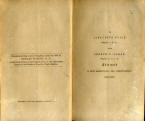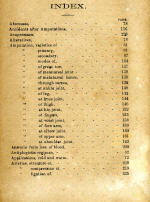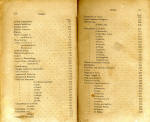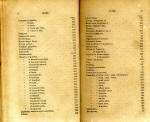Civil
War Confederate Medical Books &
Surgical Manuals
Authors:
Samuel Preston Moore, Edward Warren, J.
Julian Chisolm, Worthington Hooker
Page Six
Unlike the Union Army,
which contracted for surgical and medical publication during the Civil War,
the Confederate States Army did not contract for publication of medical or
surgical books. There are really only three surgical text books which
were published for use by the CSA surgeons during the War, they are by
Moore: A Manual of Military Surgery; by Warren: An Epitome of Practical Surgery, for
field and hospital; and by Chisolm: Manual of Military Surgery.
Original copies are in this collection. Of course many of the
surgeons who served in the CSA were educated in the north prior to the War
and they would have had the benefit of owning Civil War medicine textbooks current at the time
they entered the War. How many were able to obtain new medical books
published during the War is unknown, but most likely they were obtainable
from bootleg sources in the north or were captured during raids on Union
supplies.
A Manual of Military Surgery,
(1863) by Samuel Preston Moore, M.D., CSA (Extremely Rare)
Samuel Preston Moore graduated from the Medical
College of the State of South Carolina in 1834 and quickly became assistant
surgeon for the U.S. Army in 1835. This position required service in several
frontier regions of the country including Missouri, Kansas, Florida, and the
Texas-Mexico border. While serving in the Mexican War (1846-48), Moore met
the future President of the Confederacy, Jefferson Davis, who was quite
impressed with his organizational and disciplinary abilities.
Moore was promoted to surgeon in 1849 and remained in this position
through the 1850s. However, like many Southern officers in the United States
Army, he was in crisis while the country was on the brink of civil war. When
his home state of South Carolina seceded, he resigned his post in the U.S.
Army and moved to Arkansas to open a private practice and to avoid fighting
against a country to which he had devoted so much of his life. However, he
soon received personal requests from Jefferson Davis to join the Confederate
army. Davis’s descriptions of the army’s unfortunate military situation and
the lack of trained medical men eventually persuaded Moore to become
Surgeon-General in 1861, a position he would hold for the duration of the
war.
Moore’s A manual of military surgery (Richmond, Ayers & Wade,
1863) is a compilation of papers by surgeons which provides exact
instructions with illustrations for performing operations. It was intended
for use by inexperienced surgeons in the army.
Prepared for the Use of the Confederate States Army
Author: Samuel P. Moore, M.D. A Manual of Military Surgery. Published by: Richmond:
Ayres & Wade, 1863. The only edition. Original stiff paper
binding.
With 30
drawing plates and
174 individual figures, this was the first of only two illustrated military surgical
manuals to have been compiled and printed in the Confederacy.
During
the Civil War, Dr. Moore was the surgeon general of the Confederate States
Army Medical Department. According to several inscriptions in this
book, Moore presented this copy to George Washington Kyser while Kyser was serving
at Howard's Grove Military Hospital, Richmond, Virginia. This genuine Confederate surgical manual is a
remarkable artifact of the Civil War.
Additional
information on Samuel P. Moore, M.D.
George Washington Kyser, Born: Aug. 26, 1841,
Ackerville, Wilcox County, Alabama, Death: Jul. 20, 1911, Richmond,
Dallas County, Alabama. Dr. George Washington Kyser was
educated in the old "Carlowville Academy" under Dr. Thomas Dill. In
winter of 1860/61 he attended the Medical College of Mobile. The
following fall
Kyser entered Confederate service as a private
with the AL Cavalry, Holloway's Co. (a.k.a., Crocheron Light
Dragoons) under Gen
Braxton Bragg. In winter of 1864/65 he was sent to the Medical
College of UVA, graduating in spring of 1865. He worked in base
hospitals in Richmond and as Asst. Surgeon at Thomasville, NC. He
remained until all sick were evacuated even thou he was paroled
earlier on April 26, 1865.
Dr. Kyser received his M.D. degree from the
Medical College of Virginia. Dr. Kyser then returned home to practice
medicine in Richmond, AL.
|
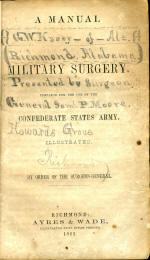
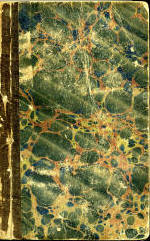
The material of the cover is
actually mottled and original as is the fabric spine. Field size manual:
7 x 4 1/2
x 1 in.
|
Signature of G. W. Kyser
George Washington
Kyser
|
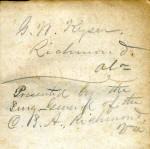 |
|
Click to enlarge surgery photos from Moore's text book
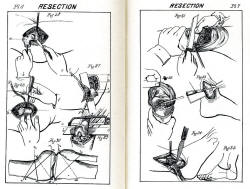
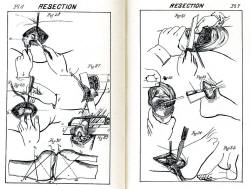
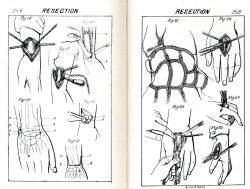
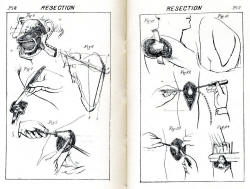
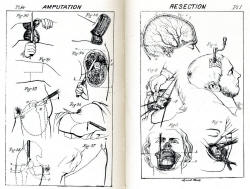

An Epitome of Practical Surgery, for field
and hospital, (1863), by Edward Warren, M.D., CSA (Extremely Rare)
Edward Warren is one of the most bizarre and
picturesque figures in the annals of American medicine, having
passed through the successive transformations of country doctor,
professor, surgeon-general and chevalier of the Legion of Honor. His
journeys took him from the swamps of the Carolinas and the shores of
the Chesapeake to the Nile and the Seine, practicing on three
continents and received everywhere with acclaim.
Born in North Carolina in 1828,
he was educated at the University of Virginia. In 1851 he received his MD
from Jefferson Medical College and began to practice in Edenton, North
Carolina. He then journeyed to Paris in 1854-55. In 1861 he was editor of
the Baltimore Journal of Medicine;
from 1860 to 1861, he was professor of materia
medica at the University of Maryland; in 1867 he reorganized Washington
University Medical School, Baltimore and was professor of surgery 1867-71;
in 1872 he was one of the founders of the College of Physicians and Surgeons
in Baltimore and served as professor there in 1872-73. Governor Vance of
North Carolina appointed him surgeon-general of the state and medical
inspector of the Confederate States from 1861 to 1865. In 1875 he settled in
Paris and died there in September 1893.
His rare and important text,
Epitome,
was used by nearly every Confederate medical officer. In writing it,
Warren consulted a number of leading texts and made no claim to originality.
A second edition was planned, but never published.
See
additional information on
Edward Warren
|
Author:
Warren, Edward, M.D. 1828-1893.
SURGEON
GENERAL OF THE STATE OF NORTH CAROLINA, FORMERLY PROFESSOR IN THE
UNIVERSITY OF MARYLAND.
An epitome of practical surgery
for field and hospital.
Published: Richmond, Va., West & Johnston, 1863.
Edition: 1st ed. Original stiff paper
binding.
Subject: Surgery, Military, Confederate
Army. 391 pages, no drawings, all text.
Field size manual: 7 3/4 x 4 3/4
x 1 1/4 in.
|

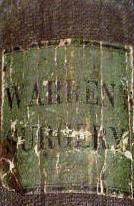
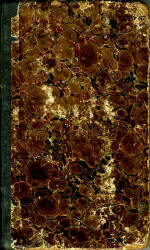 |
|
Signed on inside of front cover:
"Medical, Raleigh, 1863, Confederate States"
|
 |
|
Manual
of Military Surgery (1862) by J. Julian Chisolm, CSA (Extremely Rare), Regulations
of the Medical Department of the Confederate States
Julian Chisolm (1830-1903) was the foremost
surgeon in the Confederacy. His important military surgery
manual went through three editions and is regarded as one of the
most famous artifacts in the history of Civil War medicine. At
the outbreak of the Civil War he received the first Confederate
military commission issued to a medical officer and attended the
wounded at Fort Sumter. His Manual was presented to the
Confederate Surgeon-General, Samuel Preston Moore, while the
Battle of Bull Run was being fought.
Additional information on
John Julian Chisolm, M. D.
Civil
War anesthesia relative to Porcher and Chisolm for ether and
chloroform
|
Author:
Chisolm, J. Julian (John Julian), 1830-1903.
A manual of military surgery,
for the use of surgeons in the
Confederate States army; with an appendix of the
rules and regulations of the Medical department of the
Confederate States army. Confederate
States of America. War Dept.
Published: Richmond, Va., West &
Johnson, 1862.
Edition: 2d ed.
446 pages. Plus an appendix which contains the
Regulations for the Medical Department of the Confederate
States. For a total number of pages: 514. Field size: 7 1/2 x 5 1/4
x 1 1/4 in.

|
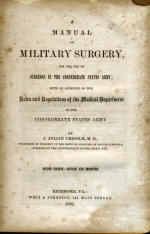

 |
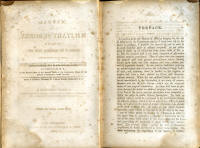

Publication Data,
Preface and Index
Human Physiology: Designed for
Colleges and the Higher Classes in Schools and for General
Reading;
(1859), by Worthington Hooker,
M.D. Marked:
Hospital Department, C.S.A.
This 1858 text was
published by Pratt, Oakley & Co., N.Y., and is marked
for the "Hospital Department, C.S.A." Just as the Union Army
Medical and Hospital Departments had libraries, so did the
Confederate Army. This text is marked with a stencil mark on the title page.
These stencils were made of metal and then used to mark library
books or other materials The distinctive breaks in the
fonts and distortions indicate the use of the metal
cut-out stencil and rolled ink stamp. An example of a Civil War type
of stencil below:
  
Examples of a name
stencil kit like those used during the Civil War:
Worthington Hooker, M.D. was
an instructor in medicine at Yale College before the Civil War.
One would assume this text book was contributed to the
Confederate States Army Hospital Department at some point during
the War by a doctor trained in the north, which was the pre-War
norm. It was most
likely placed in a Hospital library for use by doctors or
attending staff. It is a basic science text, not surgery.
.
Hand-cut Stencil mark for "Hospital
Department, C. S. A."
|
Description and
review of the text from publisher, Pratt, Oakley & Co.,1859 brochure listing
in the back of this book. |
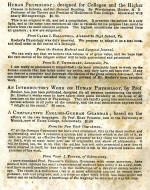 |
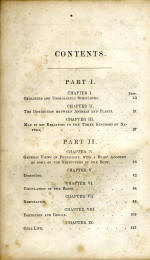
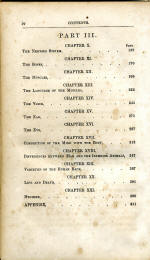
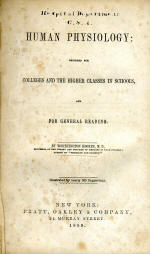 

|
Registration by the
author in 1854 on page opposite the title page |
 |
| |
|
|
From
the title page, the stencil stamp of the:
"Hospital
Department, C. S. A." |
 |
Continue to
Page 7
Medical Book Collection
Pages:
1
|
1a
|
2
|
2a
|
3
|
3a
|
4
|
4a
|
5
|
5a |
6
See information on
Medical education and lecture cards
during and before the Civil War
|
Wanted: Medical
textbooks marked for the U.S.A. Medical or Hospital Dept. |
|











